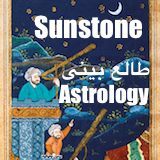The Persian New Year
Let it fill you as if you were a chia pot
And grow like fragrant watercress
Out of your hands.
The New Year will come,[1]
And you will sit
At the cloth of the "seven s's".
You will look in the mirror
And along with the red goldfish
You will be freed
From the confines of the fishbowl.
And you will pass
From the lonely ash tree,
The stately hyacinth,
The anxious garlic,
The drunken vinegar,
And the happy silver coin.
And along with the bard of Shiraz[2]
You will be filled with the sound of love.
And so, why be sad?
When the Thirteenth Day comes
You'll go with the flowing water
And speak to the sky and the earth
Of the beautiful moments of love.
July 28, 1995
Majid Naficy
[1] On the Persian New Year, the first day of spring (nowruz), it is traditional to spread on a cloth seven items, the names of which all begin with the letter sin ("s"). These "seven s's" are typically ash tree, hyacinth, garlic, vinegar, a coin, sprouts (wheat, watercress, or other), and sumac. Other items put on the cloth (not beginning with sin) are a goldfish (in a fishbowl), a mirror, and either a Koran or a copy of Hafez's collected poems. Thirteen days later, people must go hiking and cast their sprouts into a stream.
[2] An allusion to a verse of Hafez, the fourteenth century Persian lyricist.
کوزه ی شای: نوروزانه
بگذار تو را چون کوزه ای پر کند
و از دستهای تو
چون دانه های خوشبوی شای بردمد
نوروز خواهد آمد
و تو بر سفره ی هفت سین خواهی نشست
در آینه نگاه خواهی کرد
و همراه با ماهی سرخ
از تنگی تنگ آب خواهی رست
و از انزوای سنجد،
وقار سنبل،
اضطراب سیر،
مستی سرکه،
و شادی سکه خواهی گذشت
و همراه خواجه شیراز
از صدای عشق پر خواهی شد
و آنگاه، چه غم!
چون سیزده درآید
بر آبِ روان خواهی شد
و از زیبایی لحظه های عشق
با دشت و آسمان سخن خواهی گفت.
۱۹۹۵
مجید نفیسی










Comments